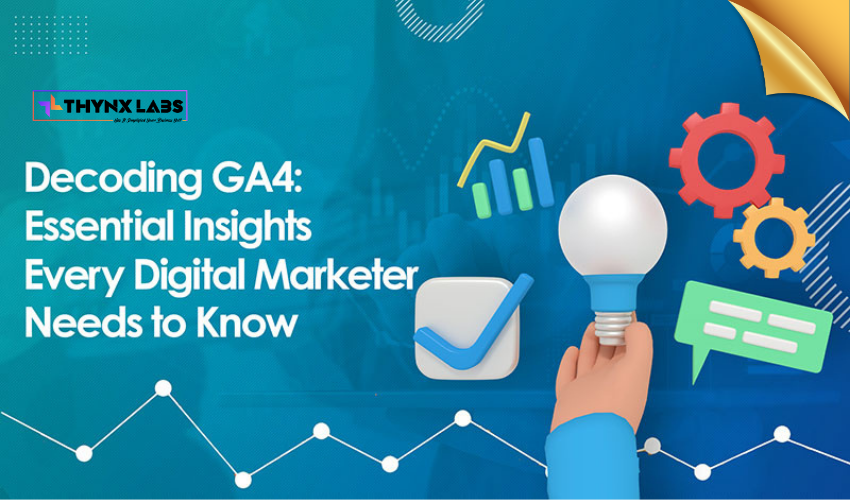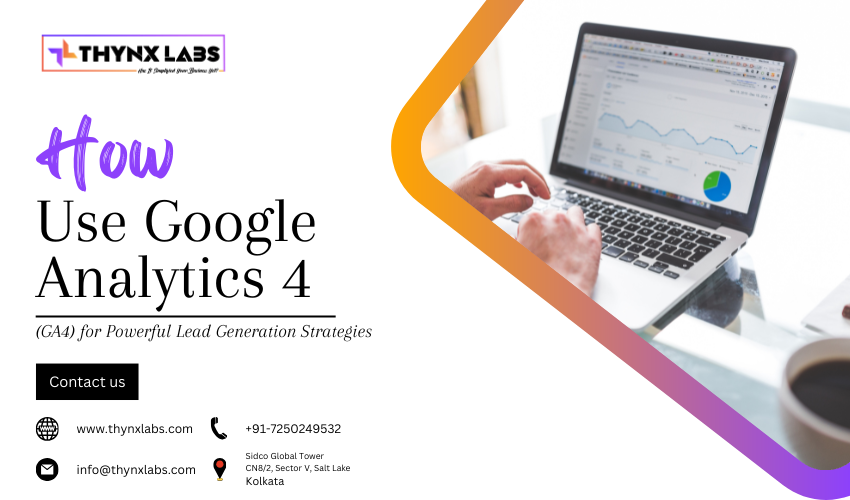GOOGLE ANALYTICS 4 – IT’S TIME TO MAKE THE SWITCH
In today's digital age, data is a critical aspect of any business or organization. It helps organizations to make informed decisions and improve their operations by providing insights into their customers' behavior and preferences. One of the most popular tools for tracking website and app data is Google Analytics. Google Analytics has been around for quite some time, and it has evolved over the years to meet the changing needs of businesses. Google Analytics 4 is the latest version of Google's web analytics service. In this article, we will discuss why it's time to make the switch to Google Analytics 4.
What is Google Analytics 4?
Google Analytics 4 is the latest version of Google Analytics. It is designed to provide businesses with a more comprehensive understanding of their customer's behavior and preferences across multiple platforms and devices. Unlike its predecessor, Universal Analytics, Google Analytics 4 is built on an event-based model that enables businesses to track specific user interactions with their website or app.
Why should you make the switch to Google Analytics 4?
1. Better User Insights
One of the main advantages of Google Analytics 4 is that it provides businesses with better insights into their users' behavior. With the event-based model, businesses can track specific user interactions, such as clicks, downloads, and form submissions. This level of granularity enables businesses to understand how their users interact with their website or app and identify areas for improvement.
2. Cross-Platform Tracking
In today's digital age, customers interact with businesses across multiple platforms and devices. Google Analytics 4 is designed to provide businesses with a more comprehensive understanding of their customer's behavior across multiple platforms and devices. This enables businesses to deliver a more personalized experience to their customers and improve their overall user experience.
3. Machine Learning Capabilities
Google Analytics 4 comes with machine learning capabilities that enable businesses to gain insights into their customers' behavior without having to do the heavy lifting. With machine learning, businesses can identify patterns in their data and make data-driven decisions based on those patterns. For example, businesses can use machine learning to identify which users are most likely to convert and target them with specific marketing campaigns.
4. Privacy-Focused
With the increasing concerns around data privacy, Google Analytics 4 is designed to be more privacy-focused than its predecessor. Google Analytics 4 enables businesses to collect data in a privacy-safe manner and provides users with greater control over their data. For example, users can opt-out of tracking, and businesses can choose to anonymize their data.
5. Improved User Interface
Google Analytics 4 comes with a new user interface that is more intuitive and user-friendly than its predecessor. The new interface makes it easier for businesses to navigate their data and gain insights into their customers' behavior. Additionally, the new interface is designed to be more customizable, enabling businesses to tailor their dashboards to their specific needs.
How to make the switch to Google Analytics 4?
If you're convinced that it's time to make the switch to Google Analytics 4, here's how you can do it:
· Create a Google Analytics 4 Property
The first step in making the switch to Google Analytics 4 is to create a new property in your Google Analytics account. You can do this by clicking on the "Admin" tab in your Google Analytics account and selecting "Create Property" under the "Property" column.
· Install the Google Analytics 4 Tag
Once you've created a new property, the next step is to install the Google Analytics 4 tag on your website or app. You can do this by following the instructions provided by Google Analytics.
· Set up Event Tracking
Google Analytics 4 is built on an event-based model, which means that businesses need to set up event tracking to track specific user interactions. You can do this by defining the events that you want to track and implementing them using the Google Analytics 4 tag. For example, if you want to track clicks on a specific button, you can define a click event and implement it using the Google Analytics 4 tag.
· Import Data from Universal Analytics
If you're currently using Universal Analytics, you can import your data into Google Analytics 4 using the Data Import feature. This enables you to retain your historical data and continue tracking your data in Google Analytics 4.
· Set up Data Streams for Cross-Platform Tracking
To track user behavior across multiple platforms and devices, businesses need to set up data streams for each platform. For example, if you have a website and a mobile app, you need to set up separate data streams for each platform.
· Customize Your Dashboards
Google Analytics 4 comes with a customizable dashboard that enables businesses to tailor their dashboards to their specific needs. You can add and remove widgets, change the layout, and customize the data that is displayed.
· Get Familiar with the New User Interface
Google Analytics 4 comes with a new user interface that is different from its predecessor. It's important to take some time to get familiar with the new interface and learn how to navigate your data.
Conclusion
Google Analytics 4 is the latest version of Google's web analytics service, and it offers several advantages over its predecessor. With better user insights, cross-platform tracking, machine learning capabilities, privacy-focused design, and an improved user interface, it's time for businesses to make the switch to Google Analytics 4. By following the steps outlined above, businesses can make a seamless transition to Google Analytics 4 and gain a more comprehensive understanding of their customers' behavior and preferences.
FAQ’s
Q.1 What is Google Analytics 4?
Google Analytics 4 is the latest version of Google's web analytics service. It is designed to provide businesses with a more comprehensive understanding of their customers' behavior and preferences across multiple platforms and devices.
Q.2 How is Google Analytics 4 different from Universal Analytics?
Google Analytics 4 is built on an event-based model, which enables businesses to track specific user interactions with their website or app. Universal Analytics, on the other hand, uses a session-based model, which tracks a user's entire session on a website or app.
Q.3 What are the benefits of using Google Analytics 4?
Some of the benefits of using Google Analytics 4 include better user insights, cross-platform tracking, machine learning capabilities, privacy-focused design, and an improved user interface.
Q.4 How do I make the switch to Google Analytics 4?
To make the switch to Google Analytics 4, you need to create a new property in your Google Analytics account, install the Google Analytics 4 tag on your website or app, set up event tracking, import data from Universal Analytics, set up data streams for cross-platform tracking, customize your dashboards, and get familiar with the new user interface.
Q.5 Can I still use Universal Analytics if I switch to Google Analytics 4?
Yes, you can still use Universal Analytics if you switch to Google Analytics 4. However, it's recommended that you use both to get a more comprehensive understanding of your customer's behavior and preferences.


